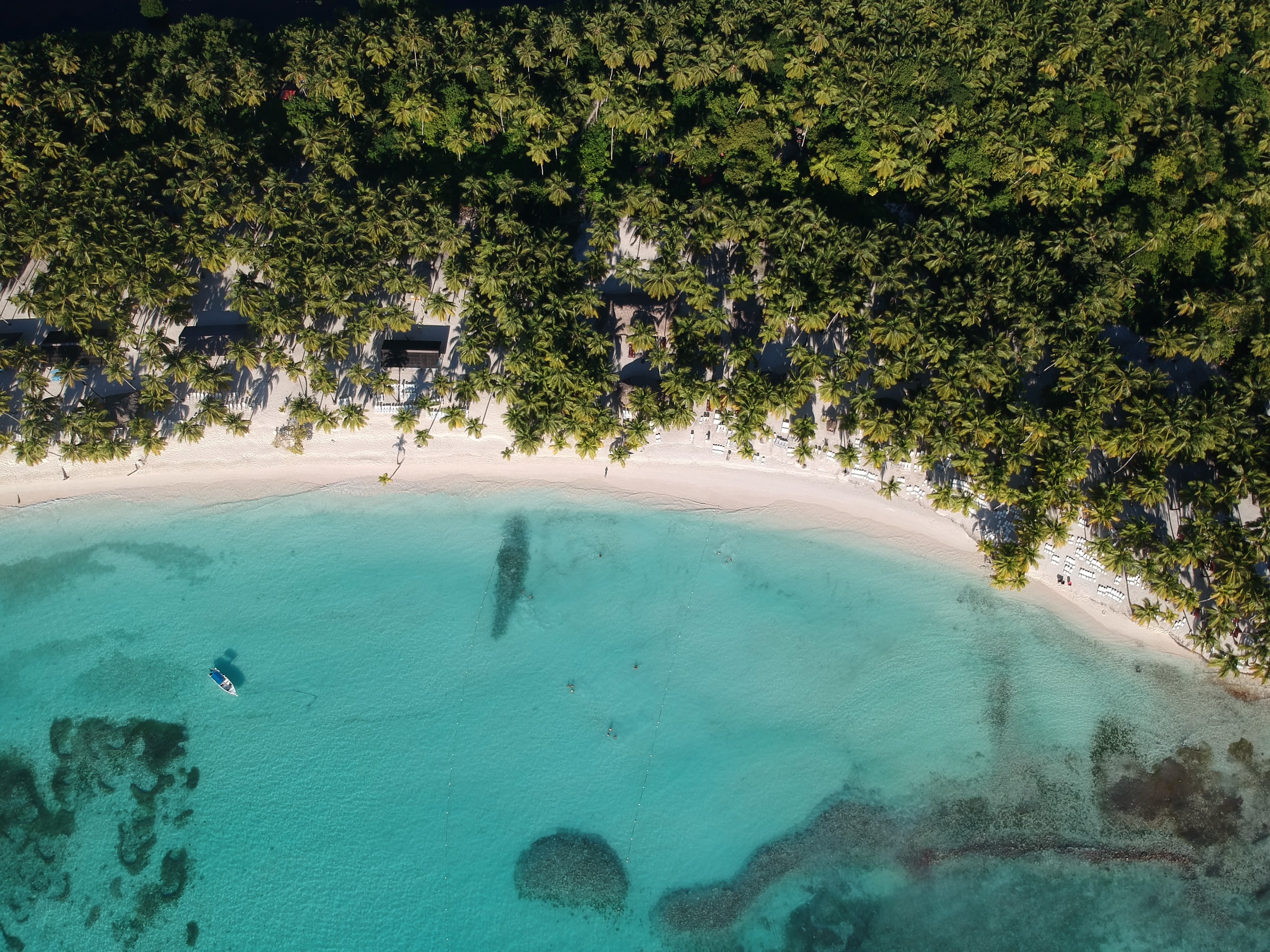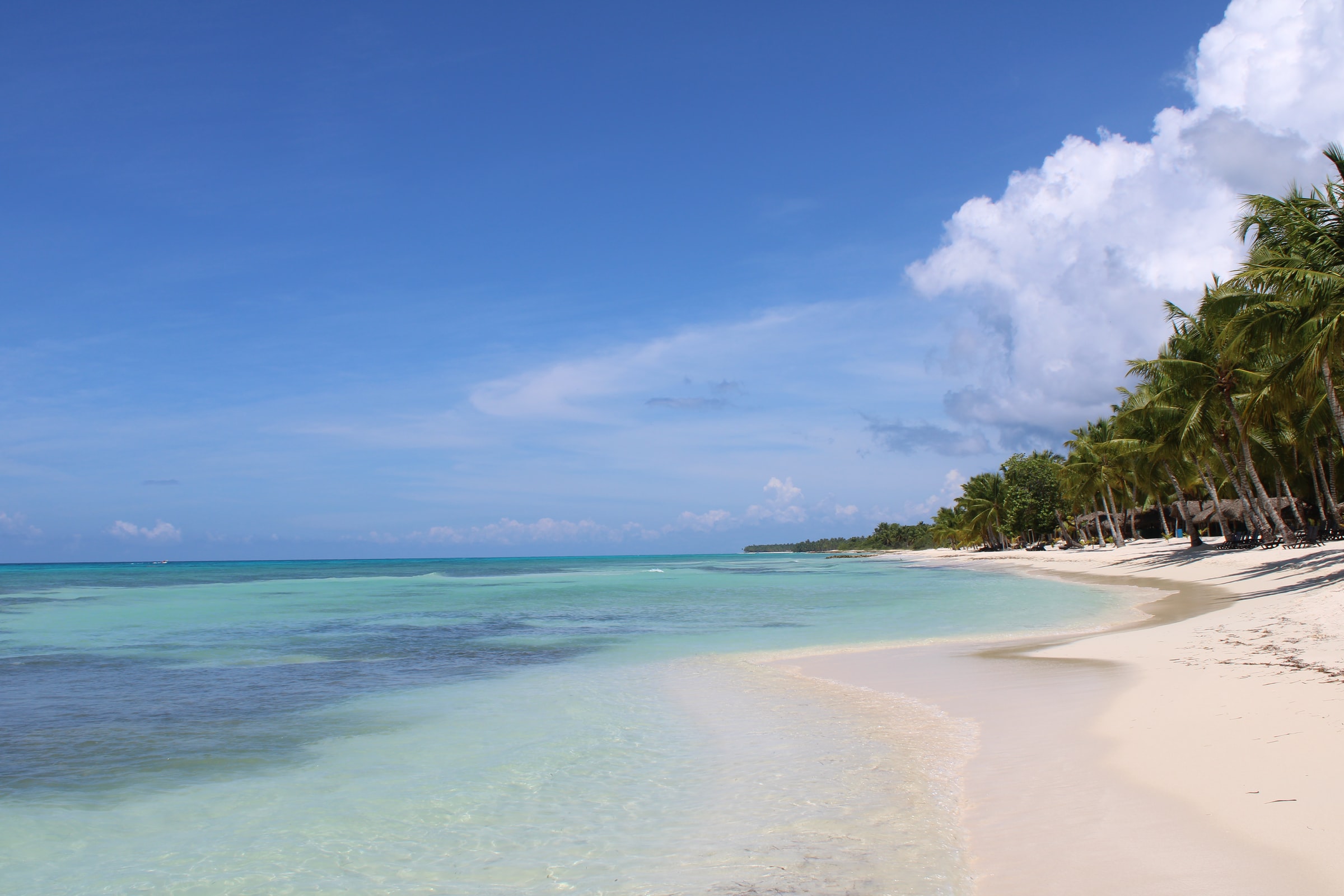Have you ever stopped to wonder why the ocean of the Caribbean is blue? After all, when you turn on your faucet at home and you fill a transparent glass with water; it does not look blue, does it? Nope! It is clear, as it may be. So why would the water in the Caribbean Sea of the Dominican Republic be blue?
For many years, people believed (and some still do!) That the ocean is blue as it reflects the blue sky. The real reason why the ocean looks blue involves reflection, but it is not because the ocean acts as a mirror to the sky. According to the National Oceanic and Atmospheric Administration, the ocean is blue because of the way it absorbs sunlight. When the sunlight hits the waters of an ocean, the water molecules naturally absorb the light rays.
The beaches on the Caribbean side of Punta Cana
The Caribbean is a blue light shade due to the tendency of the Caribbean coast to scatter sunlight. The fact that the sand is light colored and the water is relatively shallow also makes the water appear turquoise. Another element that makes the water appear blue is the absence of phytoplankton, or algae, which tend to proliferate in the water and absorb the green light, thereby making the water greener. However, the relatively constant hot temperature of the water allows an environment that is not conducive to phytoplankton growth, which eliminates this familiar green hue.

In areas of the ocean where water has high levels of plankton, the water takes on a green color. Plankton uses chlorophyll to produce food through photosynthesis. Water suspends plankton, which makes it reflect more about the green light that occurs in tropical region such as the Caribbean.
However, there is a cost for clear and blue water in the Caribbean. Plankton is the basis of the food web for ocean life. In these blue waters, life is severe, and the creatures that live there must adapt to life in an ocean that is poor in nutrients.
Coral Reefs
Observers see these adaptations in coral reefs. Corals are living creatures that form the bone structure of the underwater community. The reef provides seals and attracts other ocean life. The coral reef ecosystem reduces the harshness of tropical ocean life without affecting the color of the water.
Sunlight Reflection
In some shallow areas like here on Saona Island, the water takes an aqua color because of sunlight reflection on the sand at the bottom of the ocean. However, in areas where water is deeper, most of the light is absorbed as energy by the water long before it has a chance to reflect from the bottom of the ocean.
In the end, it boils down to 3 main factors; sunlight, water temperature and the presence of coral reefs strongly define the color of the Caribbean Sea.
